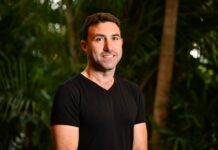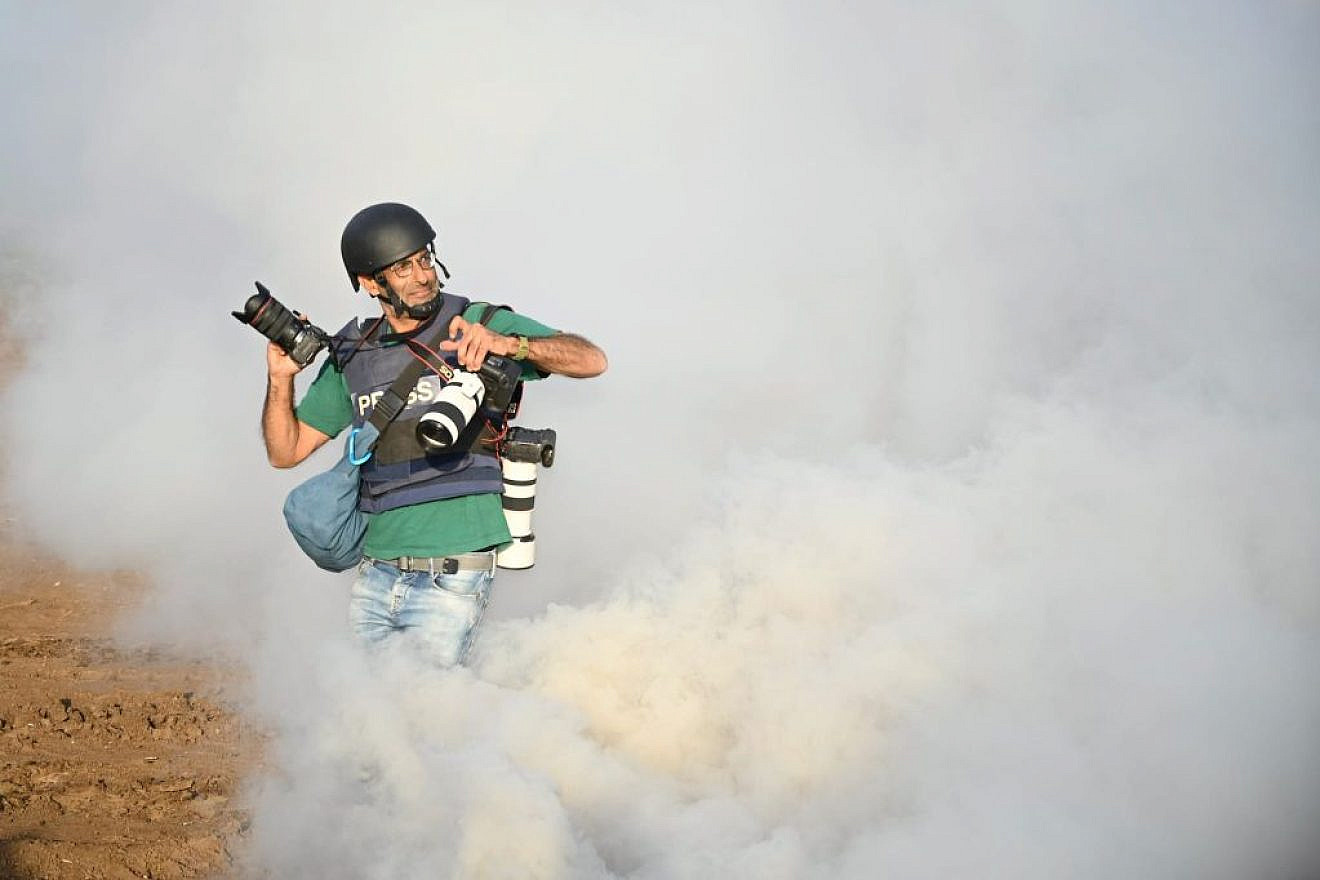Two Gaza-based Palestinian photojournalists who infiltrated Israel during Hamas’s massacres on Oct. 7 committed war crimes, experts say.
“I believe that this is clearly an incidence that would come under and be covered by both the convention that we talked about in the [International Criminal Court], of the [Convention on the] Prevention and Punishment of [the Crime of] Genocide, and under the Israeli law regarding the commission of and the prevention of genocide, and its prosecution,” Maurice Hirsch said.
Hirsch, the former chief military prosecutor for Judea and Samaria, is now director of the Initiative for Palestinian Authority Accountability and Reform in the Jerusalem Center for Public Affairs.
He was commenting on a recent report by HonestReporting, a Jerusalem-based media watchdog, which found that freelance photographers Mohammed Fayq Abu Mostafa and Ashraf Amra infiltrated Israel to photograph the attacks. They then returned to Khan Yunis in Gaza, went on Amra’s Instagram Live account and excitedly shared a video of a mob pulling an Israeli soldier out of a tank and urged Palestinians to join the attack.
“You can go to Khuza’a [an area of southern Gaza near the border]. You park your motorbike there, OK. Or your jeep. And you enter inside. You will return back with a jeep, motorbike or bicycle, or anything,” Mostafa says in the video. Later, he adds, “Advice: Whoever can go—go. It is a one-time event that will not happen again.”
Amra affirms: “Really, it will not repeat itself.”
Mostafa is a freelance photographer associated with Reuters, which published his photos of the soldier being lynched.
Amra is also a freelancer whose photo of a bulldozer breaking down a section of the Gaza border fence was published with the credit: “Ashraf Amra/Anadolu Agency via Getty Images.”
Incitement to genocide
“Having been witness to the crimes themselves and what was going on, and being witness to the genocide, to then be a party to this open public call to go and participate, to invade Israel—that is something which is at least incitement to commit the crime of genocide,” Hirsch said.
He stressed that both photographers could be prosecuted in Israel under the Laws of the Prevention of Genocide and its Punishment. “If they are arrested alive, they could be indicted for a crime which carries a death sentence,” Hirsch explained.
He drew a distinction between legitimate journalism and the photographs Mostafa and Amra took that day.
“I don’t think it’s legitimate journalism to join in and commit a genocidal act. It’s all a question of intent,” Hirsch said. “If your purpose is to then report on those committing the genocide and expose committing the genocide, that’s one thing. But if the intent is to glorify the actions of those committing genocide, you’re not fulfilling your journalistic function. You are acting as a propaganda branch of genocidal terrorists. That’s not journalism at all.”
Gil Hoffman, executive director of HonestReporting, said researchers at the organization didn’t find any indication that Mostafa and Amra had personally attacked Israelis.
“I think they would’ve bragged about it if they did. Not that I know of,” Hoffman said.
He added that he is more outraged by the fact that Reuters and Anadolu continue to maintain their relationship with the photographers. “The people who mock 1,200 murdered are being treated as professionals by mainstream news organizations,” Hoffman said.
Fruit of the poisonous tree
According to Professor Eytan Gilboa, who teaches international communications at Bar-Ilan University in Ramat Gan, Hamas benefited by having images of the violence broadcast far and wide.
“This is why they took pictures and videos. They transmitted videos to people inside Hamas headquarters from the atrocities to be broadcast on Al Jazeera and especially Muslim and Arab television networks,” Gilboa said. “To call these people ‘journalists’ and ‘photographers’ is a joke.”
Gilboa described Amra and Mostafa as “propagandists working in the service of Hamas,” and stressed that many other Palestinian photographers and writers share that character, even if they didn’t cross the border on Oct. 7.
“There’s no freedom of expression in Gaza, no freedom of media. Western news services do not acknowledge to their audiences the conditions in which these Palestinians work.”
Hoffman called on Western news services to do a better job of vetting the Palestinians they employ. In past Gaza conflicts, Israel gave foreign reporters access to Gaza, but not this time, “mostly to protect them,” explained Hoffman. “We don’t need to have more Shireen Abu Aklehs,” referring to an Al Jazeera reporter killed during a firefight between Israel Defense Forces soldiers and terrorists in Jenin in May 2022.
But that means news services are relying on Palestinian journalists who, at best, self-censor for fear of Hamas, and at worst, openly sympathize with Palestinian terrorist groups like Hamas, which is why vetting them is crucial, Hoffman said.
Another issue raised is what to do with the photographs Mostafa and Amra took that day.
Hirsch was unequivocal. “Borrowing from a legal term, [their photos and footage] would all be fruit of the poisonous tree,” he insisted. “It’s the equivalent of buying pictures from [Nazi propaganda chief] Joseph Goebbels.”

























